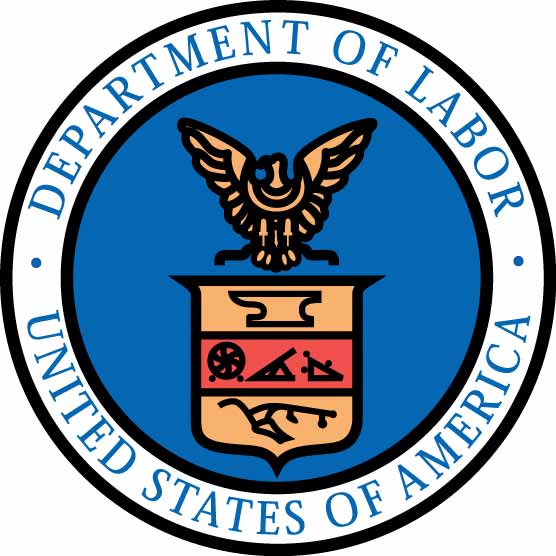 Skip Main Navigation
Skip Main Navigation
|
||||||||||||||||||||||||||||||||||||||||||||||||||||||||||||||||||||||||||||||||||||||||||||||||||||||||||||||||||||||||||||||||||||||||||||||||||||||||||||||||||||||||||||||||||||||||||||||||||||||||||||
DEPARTMENT OF LABORSince 2001, the Administration:
The President’s 2008 Budget:
FOCUSING ON THE NATION’S PRIORITIESProtecting WorkersThe President’s 2008 Budget builds upon the Department of Labor’s (DOL’s) successes in advancing worker protections, providing $1.5 billion to ensure that DOL meets its responsibilities under more than 180 worker protection laws. Since 2001, increased productivity in the Department’s Employment Standards Administration has resulted in record-level recoveries of back wages, improved employer compliance with wage laws, and increased transparency of union finances. Ensuring the safety of the Nation’s workplaces is a key part of DOL’s mission. While workplace fatalities are at historically low levels, more work remains. 2006 was a deadly year in mining, with 47 fatalities in the coal industry—the most since 1995. To address these problems and implement improvements in the MINER Act, the President’s Budget includes a $36 million, or 13-percent, increase for the Mine Safety and Health Administration (MSHA) to strengthen enforcement—particularly in the Nation’s more than two thousand coal mines. This increase will allow MSHA to retain the 170 additional coal enforcement personnel that were hired with 2006 supplemental funding. Reforming the Job Training SystemThe 2008 Budget again proposes job training reforms that will give States more flexibility to deliver workforce services tailored to their unique needs and focus resources on training workers instead of supporting bureaucracy. The reforms will consolidate several similar programs, cut Federal red tape, limit amounts spent on overhead, and create Career Advancement Accounts—worker-directed accounts that give workers the resources necessary to increase their skills and better compete for 21st Century jobs. The President’s job training reform proposal would significantly increase the number of workers receiving training while saving taxpayer dollars. Strengthening the Link Between Training and Jobs in DemandOver the last several years, the Administration has made the Nation’s workforce investment system more responsive to the needs of workers and employers. The 2008 Budget continues these important initiatives. The Budget requests $150 million for Community-Based Job Training Grants, which help community colleges and related organizations expand their capacity to train workers for jobs that are in demand in local economies. Since 2005, the program has provided grants of $250 million—funds that will be used to train an estimated 100,000 workers. Complementing this program is the High Growth Job Training Initiative, which supports partnerships of training providers, employers, and the public workforce investment system that commit to training workers for jobs in high growth industries like biotechnology and health care. Since its inception, the program has trained approximately 51,000 workers, and a total of 128,000 are expected to be trained by 2008. Safeguarding Worker PensionsThe Pension Benefit Guaranty Corporation (PBGC) protects the defined-benefit pension plans of 44 million Americans against losses that may occur when a plan terminates. When underfunded pension plans terminate, PBGC assumes responsibility for paying the insured benefits. More than 620,000 workers and retirees now receive their benefits from PBGC. The recent termination and anticipated terminations by U.S. businesses of large pension plans have put a strain on the pension insurance system and impose an increasing burden on employers who sponsor healthy pension plans. In his 2007 Budget, the President proposed comprehensive pension reform to strengthen protections for the pensions upon which American workers rely. The Congress responded by passing, with bipartisan support, the Pension Protection Act. The Act made significant structural reforms to the retirement system, but further premium changes are needed to address the $19 billion gap between PBGC’s liabilities and its assets. Although PBGC will be able to pay benefits for some years to come, it is projected to be unable to meet its long-term obligations under current law. If there is not enough money in the system to cover worker benefits, taxpayers are at risk for having to cover the shortfall. The 2008 Budget reflects the President’s continued commitment to restoring the solvency of the pension system by proposing to adjust insurance premiums paid by underfunded pension plans. PBGC premiums are currently far lower than what a private financial institution would charge for insuring the same risk. These reforms would improve PBGC’s financial condition and safeguard the future benefits of American workers. Reducing Improper Unemployment Insurance Benefit Payments and Enhancing Unemployment Tax IntegrityThe Unemployment Insurance (UI) program, a joint Federal-State partnership funded through employer payroll taxes, provides monetary benefits to eligible workers who become unemployed through no fault of their own. Despite States’ efforts to reduce improper payments, over $3.3 billion in benefits were mistakenly paid in 2006. The Administration proposes a package of legislative changes that would reduce UI improper payments by $4.8 billion and reduce employer tax evasion by almost $400 million over 10 years. The legislative proposal would:
1 2008 reflects the Administration’s proposal to merge four grant programs and create Career Advancement Accounts. 2 Net mandatory outlays are negative when offsetting collections exceed outlays. The Budget proposal to increase premiums for unfunded pension plans would have no outlay effects until 2009. 3 2008 reflects the Black Lung debt refinancing, which includes a one-time payment to Treasury. There is no Government-wide budgetary effect until 2014, when the excise tax rates would be extended. |
||||||||||||||||||||||||||||||||||||||||||||||||||||||||||||||||||||||||||||||||||||||||||||||||||||||||||||||||||||||||||||||||||||||||||||||||||||||||||||||||||||||||||||||||||||||||||||||||||||||||||||
|
||||||||||||||||||||||||||||||||||||||||||||||||||||||||||||||||||||||||||||||||||||||||||||||||||||||||||||||||||||||||||||||||||||||||||||||||||||||||||||||||||||||||||||||||||||||||||||||||||||||||||||
|
|
||||||||||||||||||||||||||||||||||||||||||||||||||||||||||||||||||||||||||||||||||||||||||||||||||||||||||||||||||||||||||||||||||||||||||||||||||||||||||||||||||||||||||||||||||||||||||||||||||||||||||||
